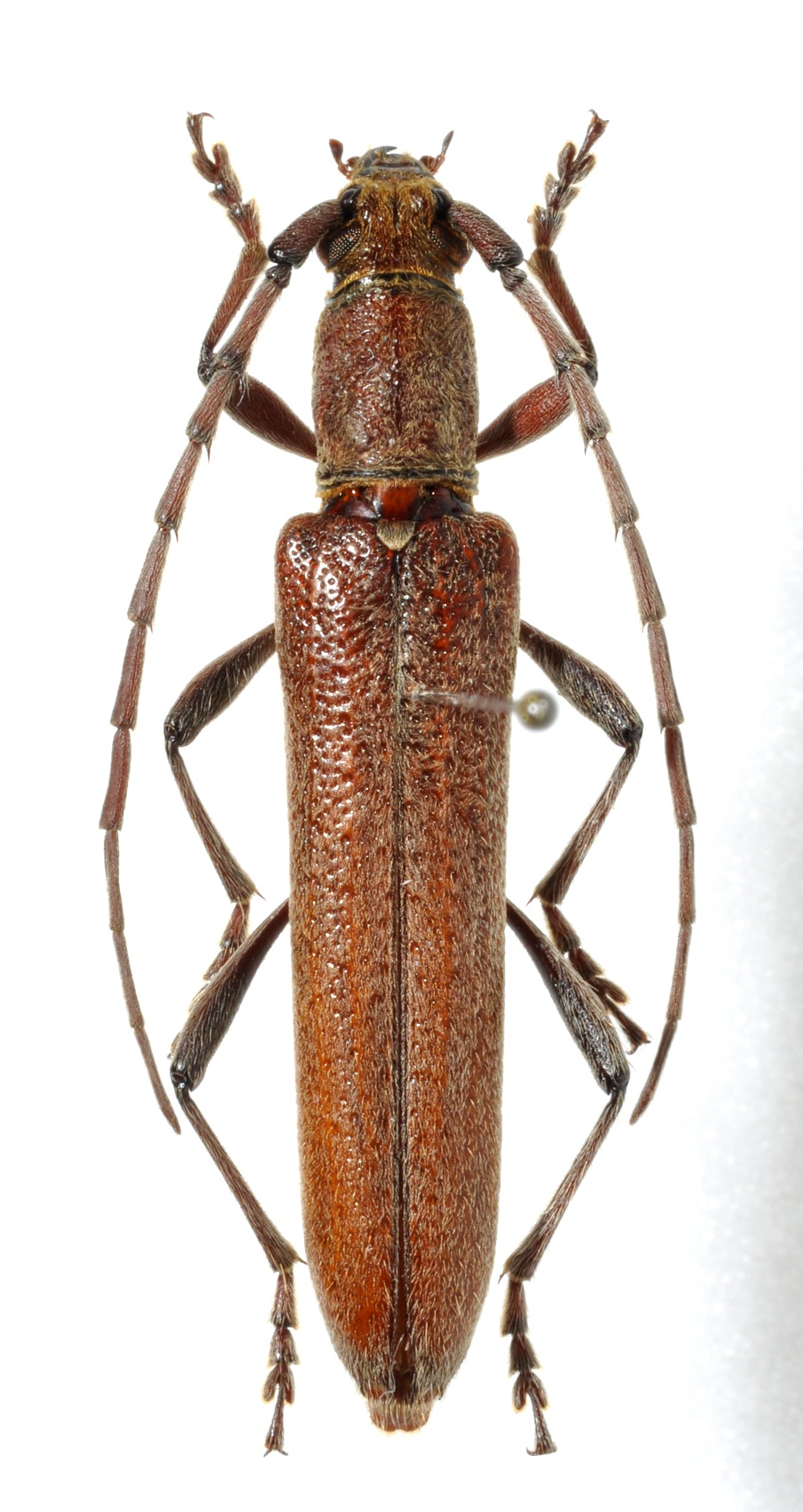| Author |
 Topic Topic  |
|
|
Pierre
Member Rosenbergia
   
Switzerland
1755 Posts |
 Posted - 21/04/2013 : 16:16:23 Posted - 21/04/2013 : 16:16:23



|

340.96 KB
Mexico, Oaxaca, Buenavista Loxicha.
29 mm.
I would be interested in your opinion about this one.
I would say genus Aneflus; or Anephlomorpha?
Many species occur in Mexico... |
|
|
dryobius
Member Rosenbergia
   
USA
1887 Posts |
|
|
Pierre
Member Rosenbergia
   
Switzerland
1755 Posts |
 Posted - 21/04/2013 : 20:01:56 Posted - 21/04/2013 : 20:01:56



|
Yes, Dan, the apex is bispinose.
I know very well Larry Bezark's Cerambycidae site. Many identifications are possible with this tool and a little experience.
But, as you have noted, the shown specimen on the Aneflus-page leave some doubts... does somebody know a key or any other paper on this genus? |
 |
|
|
dryobius
Member Rosenbergia
   
USA
1887 Posts |
 Posted - 22/04/2013 : 00:04:29 Posted - 22/04/2013 : 00:04:29



|
Pierre,
Please be aware that some of the holotype images on Bezarks' New World web site may have a problem with the true color of the specimen. I have seen the color problem on a few other specimens, particularly with images from the BMNH which were photographed a very long time ago. If you pay less attention to the color of your specimen and more attention to the the features of elytra and pronotum ( punctation size and arrangement ) it is possible that your specimen is A. cylindricollis or A. pilosicornis.
Lingafelter (1998) published a very detailed monogragh with a key to elaphidionine genera. I do not have that paper as a pdf. But there is almost no doubt that this an Aneflus.
Chemsak & Linsley (1965) published a key to a group of species of Aneflus that includes the two which I just mentioned.
Their key says that if the 3rd antennal segment is twice the length of the fourth segment, then it is A. cylindricollis. Other species in this group have the 3rd & 4th antennal segments approximately equal in length, or with the 3rd segment slightly longer.
Based on your photograph, this would be A. cylindricollis Bates. |
 |
|
|
Pierre
Member Rosenbergia
   
Switzerland
1755 Posts |
 Posted - 22/04/2013 : 20:15:03 Posted - 22/04/2013 : 20:15:03



|
Yes, I agree with you concerning a certain risk with the photos of the Cerambycidae site. The photos are sometimes dark, the type specimen in bad condition... and the photos quite small so details difficult to see... there are also several errors, specimen shown on the wrong page.
But the topic here is not to be critical with Bezark's project which remains helpful in many cases.
The only resource I have access to is the "Elaphidiini Site" which gives an extensive key to the genera http://www.sel.barc.usda.gov/Coleoptera/elaphid/key.htm
but unfortunately it does not go to the species level.
Thank you for your comments and your help. |
Edited by - Pierre on 23/04/2013 07:59:39 |
 |
|
| |
 Topic Topic  |
|


